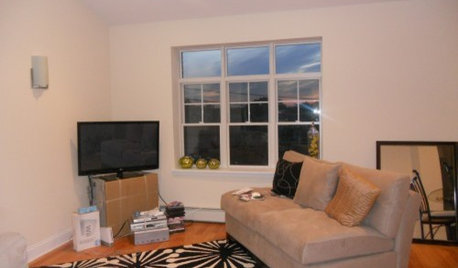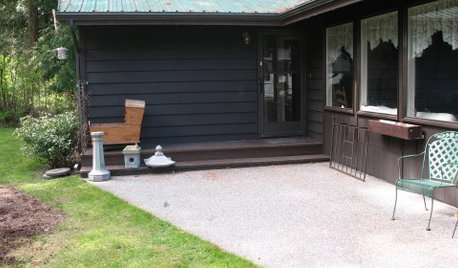Wall repair questions
janny
13 years ago
Related Stories

REMODELING GUIDESConsidering a Fixer-Upper? 15 Questions to Ask First
Learn about the hidden costs and treasures of older homes to avoid budget surprises and accidentally tossing valuable features
Full Story
MOVINGHiring a Home Inspector? Ask These 10 Questions
How to make sure the pro who performs your home inspection is properly qualified and insured, so you can protect your big investment
Full Story
REMODELING GUIDESSurvive Your Home Remodel: 11 Must-Ask Questions
Plan ahead to keep minor hassles from turning into major headaches during an extensive renovation
Full Story
GREEN BUILDINGConsidering Concrete Floors? 3 Green-Minded Questions to Ask
Learn what’s in your concrete and about sustainability to make a healthy choice for your home and the earth
Full Story
Easy Green: 6 Must-Answer Questions Before You Buy
Thinking about buying ecofriendly furniture? For a truly environmentally conscious home, ask yourself these questions first
Full Story
SELLING YOUR HOUSE15 Questions to Ask When Interviewing a Real Estate Agent
Here’s what you should find out before selecting an agent to sell your home
Full Story
5 Questions for Design Stars
Houzz Members Need Your Help With This Week's Design Dilemmas!
Full Story0


DOORS5 Questions to Ask Before Installing a Barn Door
Find out whether that barn door you love is the right solution for your space
Full Story
KITCHEN DESIGN9 Questions to Ask When Planning a Kitchen Pantry
Avoid blunders and get the storage space and layout you need by asking these questions before you begin
Full StoryMore Discussions








skyedog
brickeyee
Related Professionals
Baltimore Kitchen & Bathroom Designers · Bloomington Kitchen & Bathroom Designers · Glens Falls Kitchen & Bathroom Designers · Hammond Kitchen & Bathroom Designers · Oneida Kitchen & Bathroom Designers · Southbridge Kitchen & Bathroom Designers · Beachwood Kitchen & Bathroom Remodelers · Bloomingdale Kitchen & Bathroom Remodelers · Bremerton Kitchen & Bathroom Remodelers · Elk Grove Village Kitchen & Bathroom Remodelers · Oceanside Kitchen & Bathroom Remodelers · Superior Kitchen & Bathroom Remodelers · Arvada Architects & Building Designers · Palmer Architects & Building Designers · South Lake Tahoe Architects & Building Designersmainegrower